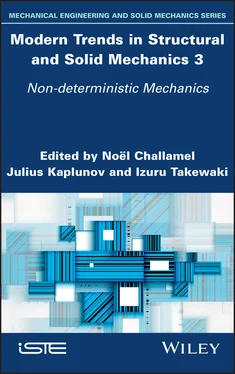The tight coupling between cellular bioenergetics, metabolism, the inner membrane structure and mitochondrial function, as well as a continuous and high level of neuronal energy requirements, suggests links to understanding neurodegenerative diseases, bioenergetic dysfunction and mitochondrial diseases, and hopefully, to the identification and the enaction of clinical efforts for recovery. Such complex coupling suggests that constrained optimal decisions are a significant aspect of the governing of system behavior.
1.7. Mitochondrial diseases and neurodegenerative disorders
Mitochondrial dysfunction and disease are fundamental to the progression of the major neurodegenerative and neuropsychiatric diseases. Causes can include genetic defects, and intra- and extracellular environmental instigators, resulting in incurable neurodegeneration with motor, behavioral and cognitive losses of functioning, leading to death (Correia and Moreira 2018).
Primary mitochondrial defects affect all aspects of functioning. They are linked to diseases such as Alzheimer’s, Huntington’s, cancer, in the aging process (Lemonde and Rahman 2014) and are involved in the pathogenesis of multiple sclerosis (Adiele and Adiele 2019). Even relatively minor mitochondrial dysfunction can lead to Parkinson’s disease and Huntington’s disease, which also has psychiatric manifestations (Buhlman 2016).
Mitochondrial energy production occurs within the inner membrane, in the respiratory chain within the five enzymatic complexes that are housed in the matrix (see Figure 1.1). Nuclear DNA (nDNA) and the mitochondrial DNA (mtDNA) control the respiratory chain. Each cell has hundreds or thousands of mtDNA copies, and during cell division, any genetic mutations in mtDNA are distributed to the daughter cells randomly, resulting in both mutant- and wild (non-mutant)-type mtDNA copies. With further cell divisions, there is an accumulation of mutant cells. When the ratio of mutant to wild-type mtDNA copies grows beyond a certain threshold, which is random within a range, clinical symptoms of diseases can occur due to a misfiring of energy production. This group of diseases is known as mitochondrial disease. Different patients manifest their diseases at different stages, in different ways, due to the randomness of the relation between the above ratio and how the organism responds (Kurt and Topal 2013).
By way of fusion, damaged mtDNA is diluted, lowering the ratio between mutant and wild types below the threshold. Fission provides a mechanism to isolate components that become damaged due to age, or due to increased oxidative stress, for elimination. An imbalance between fission and fusion, discussed earlier as an optimal balancing, results in mitochondrial dysfunction (Panchal and Tiwari 2019).
Aging can lead to an accumulation of ROS, major contributors to oxidative stress, due to the imbalance between the production of ROS and their oxidation, which then affects mitochondrial respiratory chain function. Cumulative oxidative stress is viewed as the critical factor that precedes a cascade to dysfunction (Elfawy and Das 2019).
Mitochondrial diseases have a major relevance to military personnel health. For example, approximately one-third of the 1990–1991 US Gulf War veterans – in the range of 175,000–250,000 soldiers – developed chronic multisymptom health problems, known by the term “Gulf War Illness”, with mechanisms that adversely affect mitochondria (Koslik et al . 2014; Chen et al . 2017).
More generally, and rounding out the above discussion, when compared to the tremendous number of papers that describe experimental results and hypothesize causes, effects and couplings, there have been a comparatively small number of works on the mathematical modeling of various aspects of mitochondrial function. Early examples of such models (Magnus and Keizer 1997, 1998a, 1998b) are quite complex, with simpler derivative models attempted (Bertram et al . 2006; Saa and Siqueira 2013). Derived equations govern ATP production during glucose metabolism via oxidative phosphorylation. There have also been efforts to relate mitochondrial dynamics to neuronal spike generation, providing a powerful tool for disease modeling and potentially enabling clinical interventions (Venkateswaran et al . 2012). A computational model for the mitochondrial respiratory chain is derived to appropriately balance mass, charge and free energy transduction (Beard 2005). Evidence exists of optimal decisions occurring within the mitochondria. The challenge of formulating even a simple model is a serious undertaking.
Mathematical modeling has been attempted for other critically related aspects of energetics, but are beyond our scope here, which has been to provide background on the mitochondria, where optimizations appear to have been the governing framework for processes.
Due to the formidable challenges in gathering biological data, understanding cause and effect, and even identifying all the components and constituents of cells, it is fully understandable and logical that these have taken precedence in the research community. As these aspects have become better understood and deeper, we have seen that mathematical modeling efforts have started to take hold and bear fruit.
Mitochondria play a central role in cellular energetics, and are involved in almost all neurological disorders. Thus, mitochondrial function is at the core of our understanding of neurological health. How dysfunction leads to many of the most debilitating and fatal neurodegenerative diseases is still poorly understood. Some understanding may be garnered if the processes that occur within the cell can be placed in an optimization framework, which may then lead to therapeutic interventions to improve the health of the many millions of people who suffer from these diseases.
Mitochondria move, stop and anchor, undergo fusion and fission, and degrade on the spatial and temporal scales needed to meet the broad spectrum of cellular energy needs, as well as Ca ++buffering needs, throughout the neuron. Any lack of these functions can lead to mitochondrial and neuronal death. Based on the literature, of which only a very small fraction is referenced here, it appears that there are energy-based mechanisms that operate locally (sub-optimizations) and globally across multiple cells and beyond (perhaps full optimizations). Such a constrained optimization framework appears to be a reasonable way to better understand very complex subcellular processes.
It appears that among numerous progression paths, some lead to dysfunction, in particular, due to ineffective energy production. These paths, we believe, satisfy some optimalities in order to become the chosen progression path. We may conclude that physiological, as well as pathological paths, in conjunction with other environmental factors, can be optimal choices for the organism. Perhaps, depending on the combination of intracellular and extracellular environments, such optimizations can be based on different cellular/subcellular states, characteristics and constraints. Clearly, due to the criticality of energy production and usage, we expect that these are fundamental aspects of any optimal decision-making. There may not be any global optimizations, only local sub-optimizations. Understanding these optimality decisions may provide clues and eventually paths for clinical interventions and cures for some of humanity’s most serious neurodegenerative diseases.
Approaching such problems with the view of an applied mechanician may provide new perspectives on cell modeling and intracellular processes. We trust that this chapter will motivate others to try their hand at biological modeling.
Читать дальше












